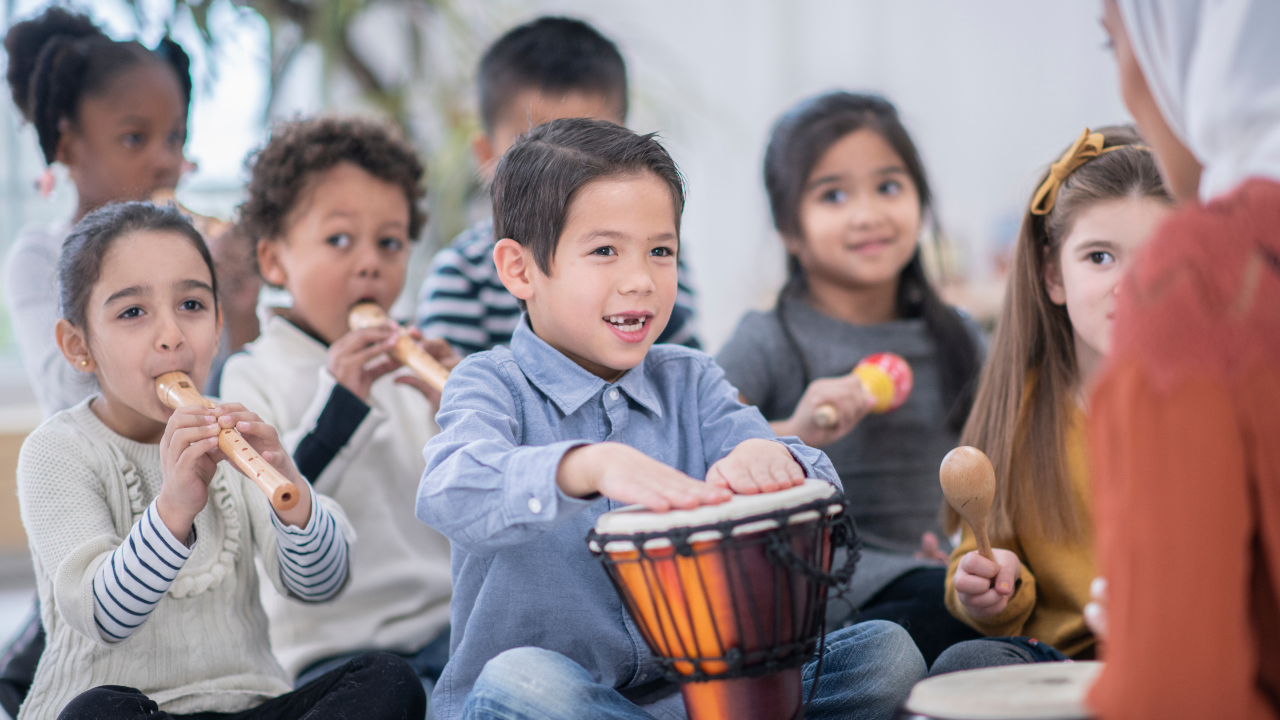
30+ Engaging Ideas for Elementary Music Centers
Oct 19, 2021I love my job! I am not sure if other teachers realize how lucky we are! Singing, dancing, playing and getting to build relationships with students over multiple years really makes most days fly by and not seem much like work at all. However, I am a little jealous of the time other teachers have to sit down and work with students on an individual basis. Many elementary general music philosophies focus so heavily on direct instruction that having time with students one on one or in a small group seems difficult.
To find this time for my students and myself, I have started incorporating centers. Centers allow me the time to work with smaller groups of students as well as providing opportunities for everyone else to practice learned skills in a variety of ways. Win, win.
To make centers beneficial for everyone in my music classroom, I consider:
1. What skills do students need to practice?
Keeping the standard/standards or objective in mind will help you to decide what center tasks are appropriate and will help students obtain mastery of the concept that you determine is the most important.
2. How will you incorporate different learning styles?
Centers should include a lot of different ways to get to the same goal. Think about how you can create tasks that give all learners a way to show what they know using different intelligences. You may also want to consider tasks that would be fitting for learners who need low risk activities to find success. Engagement is a key for not only learning but also allowing the teacher to focus on just 1 group while others work independently.
3. How will you know students are learning? Or do you need to know?
As you pick out tasks, think about the evidence you will have from your students after they have completed centers. Student tasks can show engagement or understanding (like turning in their work for you to assess). Keeping the end in mind is important in order to follow the expectations in your own teaching situation.
Are you ready to create small group learning opportunities in your classroom? Here are some ideas to get you started!
Perform
- Use found sounds to create your own accompaniment to a song
- Perform a song with different voices (sing, talk, whisper, etc.), tempos, or dynamics
- Move to the steady beat of a song (jump, dance, march, clap, etc.)
- Use a scarf or towel to show the melodic contour as you listen to song
- Reinforce previous learning by playing known classroom games
Rhythm Kaboom is an awesome way to have students practice reading rhythms.
Students draw a card and read/clap/play the rhythm on the card. If they perform it correctly they keep the card, and if they make a mistake they place the card back into the pile. Also available for recorder in 2 different levels.
The Treble Clef Uno game allows students to practice naming notes on the treble clef staff and engaging in the well-known card game. Also, available for Rhythm and Bass Clef.
Create
- Arrange known songs into a different form.
- Create your own ostinato using body percussion
- Compose your own melody using Boomwhackers or other pitched instruments
- Write a parody to a known song (think Mad Libs)
- Create a composition.
Respond and Connect
- Read about a musician and write about what you learned
- Evaluate a musical performance
- Create a playlist with a variety of genres for students to listen
- Write the room!
- Practice music terminology with a Scatter Find activity
If you have technology available in your classroom, you can see 20 more ideas by clicking here!
This article was submitted by Katherine Miller contributing author for ThatMusicTeacher.com. Interested in becoming a contributing author? Email resume and writing sample to [email protected]

Don't miss a beat!
New moves, motivation, and classes delivered to your inbox.
We hate SPAM. We will never sell your information, for any reason.

